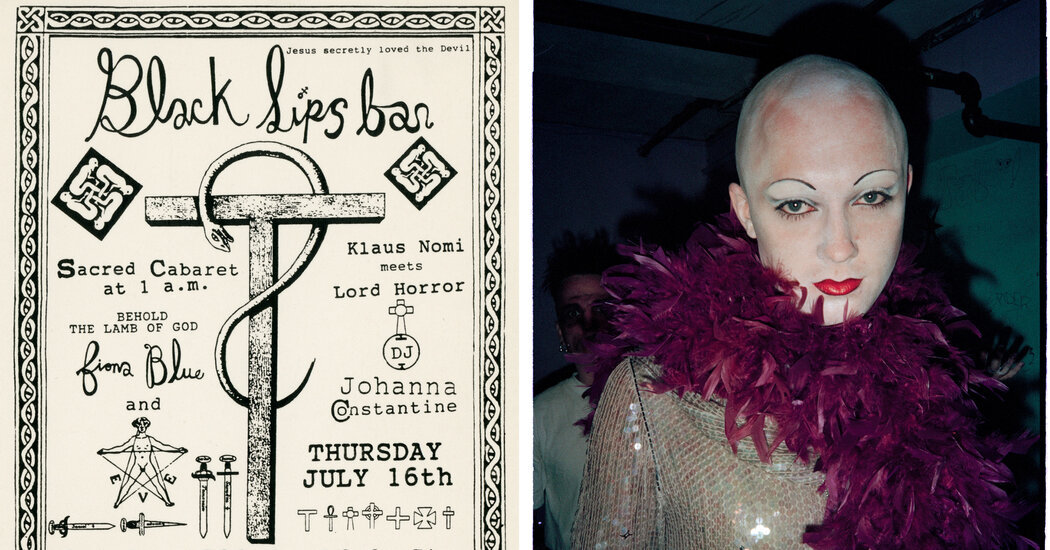Lately in Berlin, the city’s fine-dining chefs have been catering more to a local crowd. Take Vadim Otto Ursus, a native of the city whose jewel box of a restaurant, Otto, has been winning accolades for its sophisticated seasonal fare, such as wild boar tartare and grilled local mushrooms served with koji egg yolk, since 2019. On March 3, Ursus, along with his two business partners Eva Alken and Clemens Roesch, opened Trio, a lively reimagining of a wirtshaus, the German version of a pub, in the neighborhood of Mitte. The food is traditional — lentil stew, venison goulash and eggs in mustard sauce — and is made using local produce; the wine comes mostly from German vintners, and there are beers on tap. The interiors (designed in collaboration with the Vienna-based Joyjoy Studio) feature fire-red Formica booths and a curved bar great for solo diners. trioberlin.net.
Read This
A New Book Revisits the Surrealist Late-Night Plays of the Blacklips Performance Cult
In October 1992, before she became the lead singer of the chamber-pop band Antony and the Johnsons, the musician and visual artist Anohni bounded across New York’s Avenue A, near Tompkins Square Park — clad in a wedding dress and shoes with holes, clutching a pile of papers — and approached a passer-by. “Hi, I’m in a conundrum,” she said. “I’m doing a show, and I’m looking for post-apocalyptic drag queen types. Do you know any?” The performer Sissy Fitt responded, “That would definitely be me.” Such were the connections forged at the dawn of the Blacklips Performance Cult, a queer-punk theater troupe that, until 1995, staged a new blood-and-glitz-filled play every Monday at 1 a.m. at the Pyramid Club in Alphabet City. The group’s history of after-hours performance is chronicled in a new music compilation and book presenting photos, scripts, essays and hand-drawn fliers for their plays (“Industrial romance for bruised and battered angels,” reads one; “Be beautiful! Worship the devil!” proclaims another). The audio accompaniment features downtown luminaries such as Diamanda Galás and Divine, plus several early recordings by Anohni, then known as Fiona Blue. The book’s 472 pages of subcultural excavation are part punk zine, part queer avant-garde history, a testament to cross-generational solidarity as the AIDS crisis persisted. Long before she achieved international renown, Anohni and her cohort fortified themselves against a brutally inadequate world by creating…
Click Here to Read the Full Original Article at NYT > Travel…
